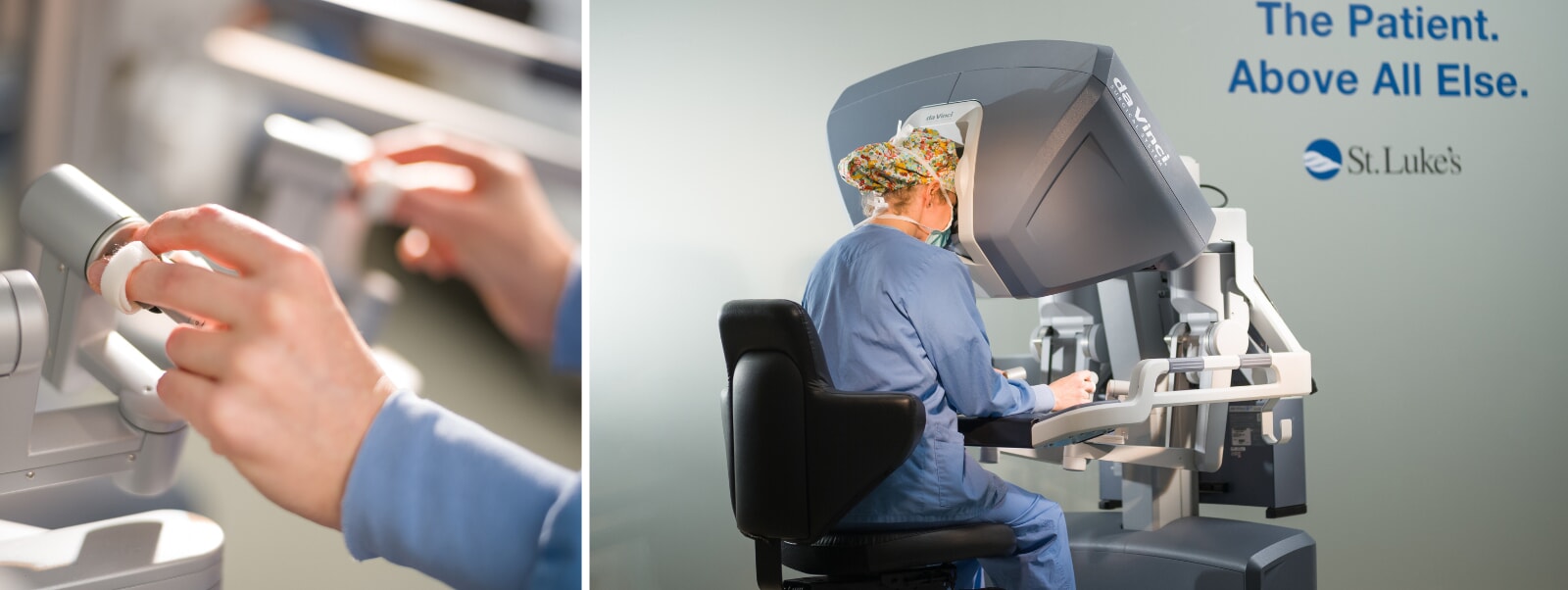The Next Level of Surgery

Recover faster. Have less pain. Go home sooner.
Some surgeries are more complicated than others.
“Traditionally, there are surgeries that would have required a larger, more painful incision,” explained Dr. Joshua Larson, St. Luke’s General Surgeon. “This often resulted in prolonged hospital stays and increased risk of wound complications.”
But now, thanks to laparoscopic surgery, surgeons can perform some operations with only a few incisions. For patients, that means they can recover faster, with less pain, and are home much sooner.
Robotic-assisted surgery brings laparoscopic surgery to the next level.
How it works
Laparoscopic surgery requires several small incisions. These incisions accommodate a camera and surgical instruments, through which the surgeon performs the surgery.
In robotic-assisted laparoscopic surgery, the camera used has enhanced 3D vision, giving the surgeon an incredibly clear view inside the body. Plus, the operating instruments have an increased range of motion compared to traditional instruments, which enables more delicate and precise movements.
Both the camera and instruments are controlled entirely by the surgeon, who operates the robotic instruments from a nearby console.
Robotic-assisted surgeries at St. Luke’s
St. Luke’s has been offering robotic-assisted surgeries since 2011, using a da Vinci surgical system. Recently, a second da Vinci surgical system was added.
The addition of this second robot has significantly reduced the wait time for surgeries requiring this technology. It has also increased access for emergency surgeries.
Aspirus St. Luke's surgeons in several specialty areas offer robotic-assisted surgeries, including hernia repairs, hysterectomies and prostatectomies, to name just a few.
To learn more about surgery at St. Luke’s, visit slhduluth.com/surgery.